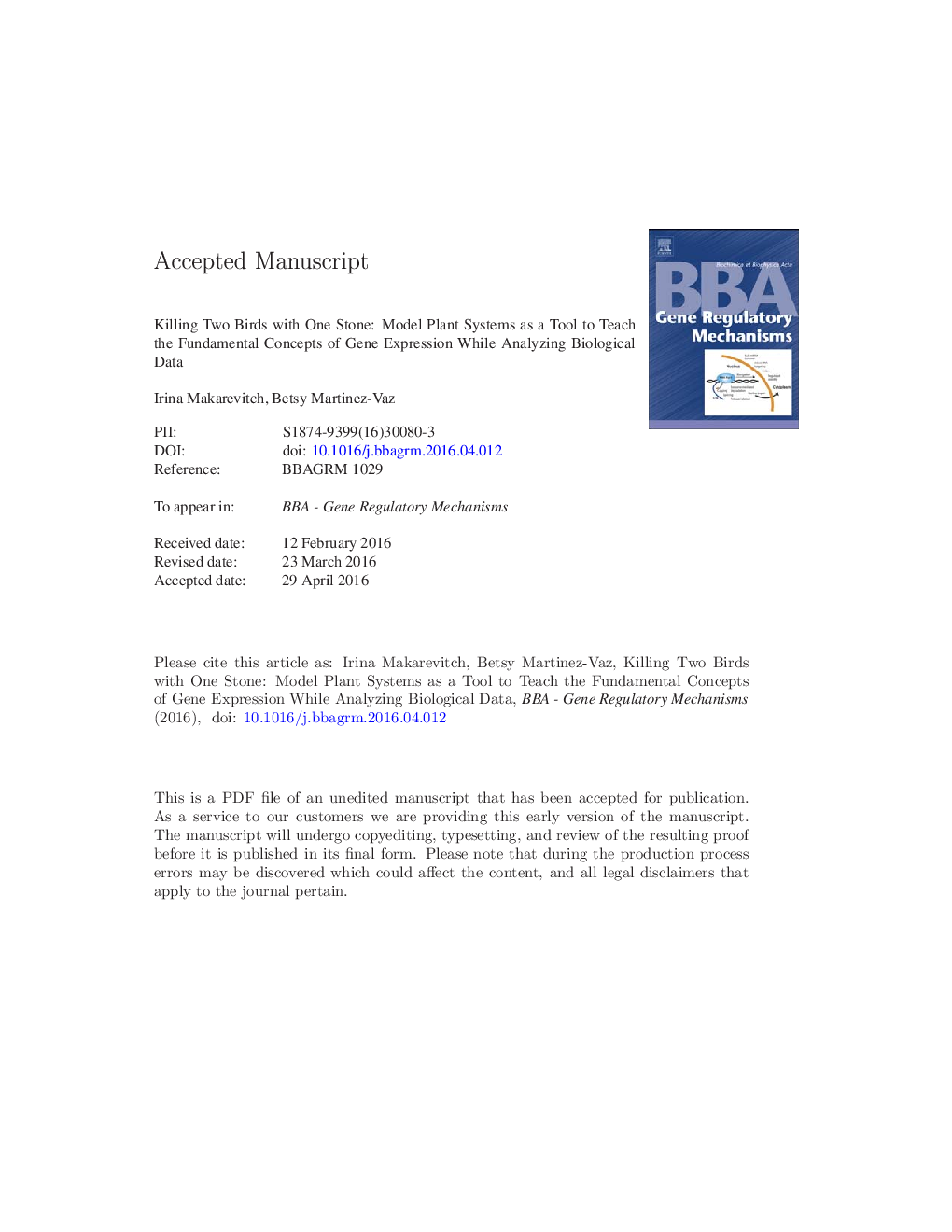| Article ID | Journal | Published Year | Pages | File Type |
|---|---|---|---|---|
| 5507728 | Biochimica et Biophysica Acta (BBA) - Gene Regulatory Mechanisms | 2017 | 35 Pages |
Abstract
Plants are ideal systems to teach core biology concepts due to their unique physiological and developmental features. Advances in DNA sequencing technology and genomics have allowed scientists to generate genome sequences and transcriptomics data for numerous model plant species. This information is publicly available and presents a valuable tool to introduce undergraduate students to the fundamental concepts of gene expression in the context of modern quantitative biology and bioinformatics. Modern biology classrooms must provide authentic research experiences to allow developing core competencies such as scientific inquiry, critical interpretation of experimental results, and quantitative analyses of large dataset using computational approaches. Recent educational research has shown that undergraduate students struggle when connecting gene expression concepts to classic genetics, phenotypic analyses, and overall flow of biological information in living organisms, suggesting that novel approaches are necessary to enhance learning of gene expression and regulation. This review describes different strategies and resources available to instructors willing to incorporate authentic research experiences, genomic tools, and bioinformatics analyses when teaching transcriptional regulation and gene expression in undergraduate courses. A variety of laboratory exercises and pedagogy materials developed to teach gene expression using plants are discussed. This article is part of a Special Issue entitled: Plant Gene Regulatory Mechanisms and Networks, edited by Dr. Erich Grotewold and Dr. Nathan Springer.
Keywords
Related Topics
Life Sciences
Biochemistry, Genetics and Molecular Biology
Biochemistry
Authors
Irina Makarevitch, Betsy Martinez-Vaz,
